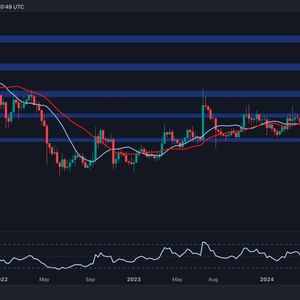Summary Historically, bitcoin has reached new all-time highs between six and twelve months after each halving event. CME Group Crypto futures and options saw increased trading activity amid market volatility in early August. The 2024 U.S. Presidential Election could also be a pivotal moment for bitcoin and cryptocurrencies in general, especially regarding the regulatory environment. By Jim Iuorio At a Glance Historically, bitcoin has reached new all-time highs between six and twelve months after each halving event CME Group Crypto futures and options saw increased trading activity amid market volatility in early August On April 19th, 2024, Bitcoin ( BTC-USD ) experienced its fourth "halving" since its inception in 2009. This event, hardcoded into Bitcoin's protocol, occurs approximately every four years – or more precisely, every 210,000 blocks mined. Its primary function is to reduce the reward that miners receive for validating transactions and adding new blocks to the blockchain. The reward is cut in half, with several intended downstream effects on the coin: Supply Control: The halving mechanism is designed to reduce the rate at which new coins are created and entered into circulation. Create Scarcity: By reducing the rate of new bitcoin creation, the halving increases its scarcity over time. Price Support: By reducing the supply of bitcoin while demand remains constant, the halving theoretically supports price appreciation. The concept of a fixed total supply (capped at 21 million coins) and increasing scarcity has long been considered one of bitcoin's primary advantages over traditional fiat currencies and even other cryptocurrencies. This feature is often cited as a key factor in maintaining bitcoin's value proposition within the space. Bitcoin’s Ups and Downs Historically, new all-time highs have been achieved between six and 12 months after each halving event. However, it's important to note that the sample size is quite small, at only three. To fully appreciate the potential impact of the 2024 halving, it's essential to consider the broader market context of the past few years. Near the end of 2022, bitcoin and the broader cryptocurrency market experienced a severe downturn, with bitcoin's price plummeting by approximately 77% from its previous all-time high. The collapse of major crypto firms, including the high-profile FTX exchange, contributed to negative sentiment and ushered in a period of intense regulatory scrutiny. At the beginning of 2023, the narrative flipped, and the market began to focus on a series of positive headlines: Major financial institutions like BlackRock ( BLK ), Vanguard and VanEck made significant moves to increase their exposure to bitcoin. The approval and launch of the first spot Bitcoin ETFs in the United States marked a pivotal moment for mainstream access and acceptance. Bitcoin went on a historic tear, rallying over 300% in the subsequent 15 months, topping at an all-time high of $73,000 in mid-March, one month before the halving. With various unknowns still ahead, CME Group Bitcoin futures contracts have played a significant role in adding flexibility to investing in, trading, or hedging the risk of holding the coin. As market volatility surged in early August, so did interest in CME Crypto futures and options. The week of August 5 was the best trading week to date with over 960K contracts traded, and this contributed to a record average daily volume (ADV) for the third quarter. Higher Prices Ahead? The important question is: Did the market already discount the halving's effect on supply, or are we yet to see the past pattern of a delayed price spike? It’s hard to know for sure. Bitcoin’s ability to rally to new highs may come down to the alternative forces influencing the coin. Domestic interest rates should be a major factor – bitcoin prices rose over 2% within the first 24 hours following the Federal Reserve’s announcement of a 50 basis point cut in its September meeting. Lower rates could continue to be a tailwind for bitcoin for two reasons: Lower rates lead to currency weakness. This should boost fiat proxy and hedging instruments like gold and bitcoin. Lower rates make holding non-yielding assets more attractive. This concept makes more sense if you view the inverse first: Higher rates, or opportunity cost, makes holding non-yielding assets less attractive. The 2024 U.S. Presidential Election could also be a pivotal moment for bitcoin and cryptocurrencies in general, especially regarding the regulatory environment. As of mid-September, Republican nominee Donald Trump has voiced support for crypto, while Democratic nominee, Kamala Harris, has not shared an official stance on the subject. These factors, in addition to this year’s halving, could all influence bitcoin’s price for the remainder of the year. Original Post Editor's Note: The summary bullets for this article were chosen by Seeking Alpha editors.










